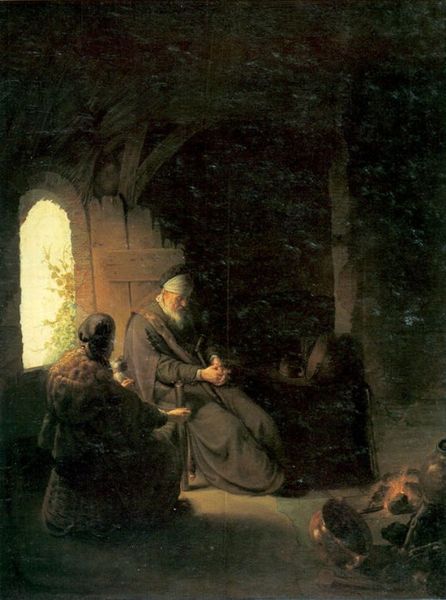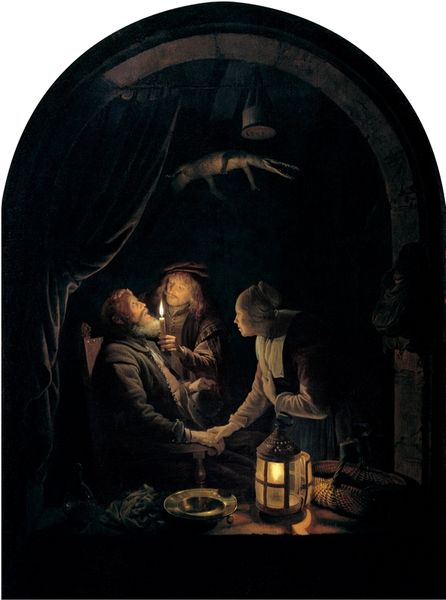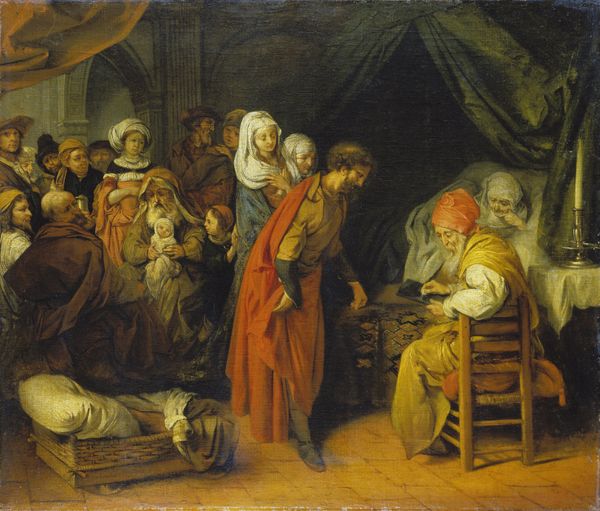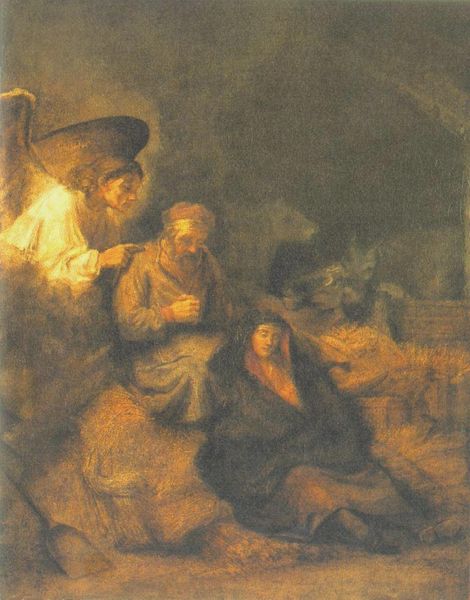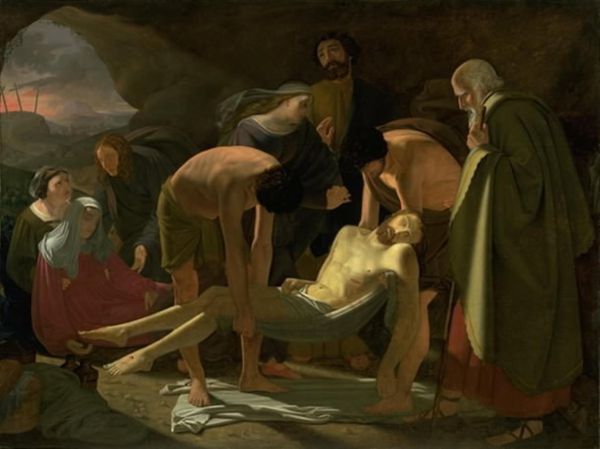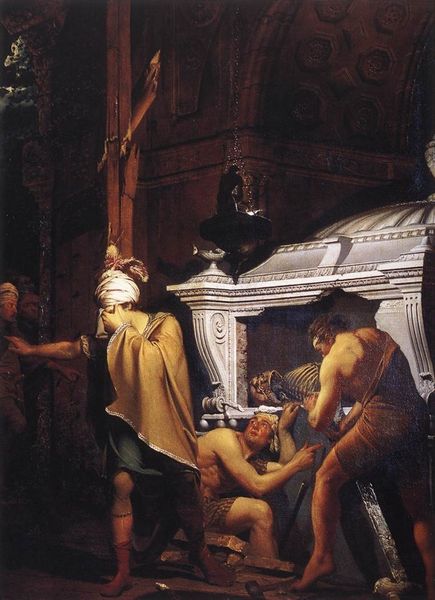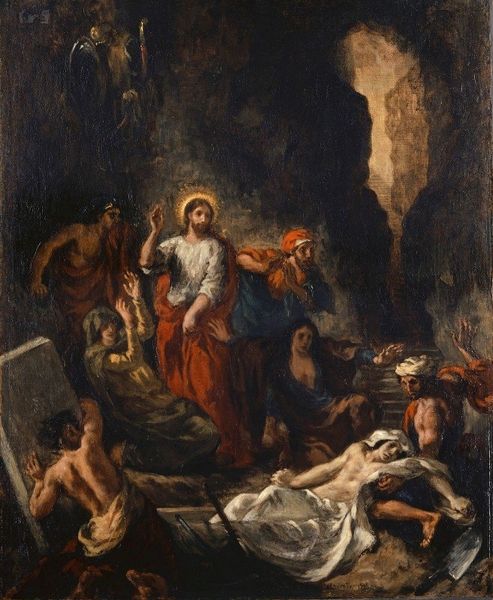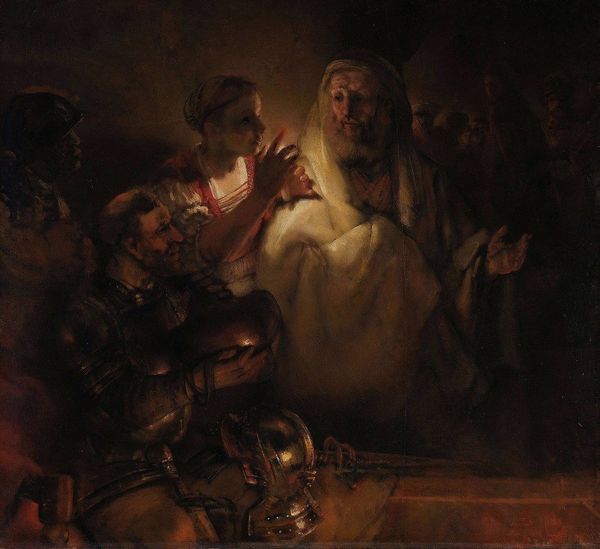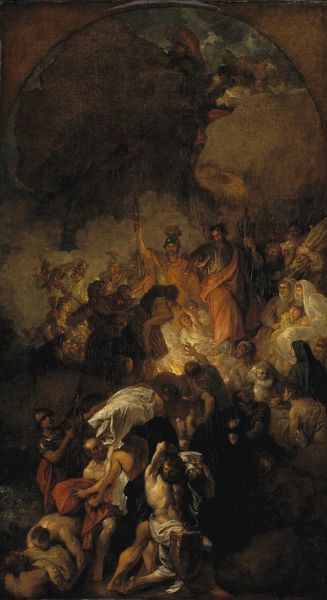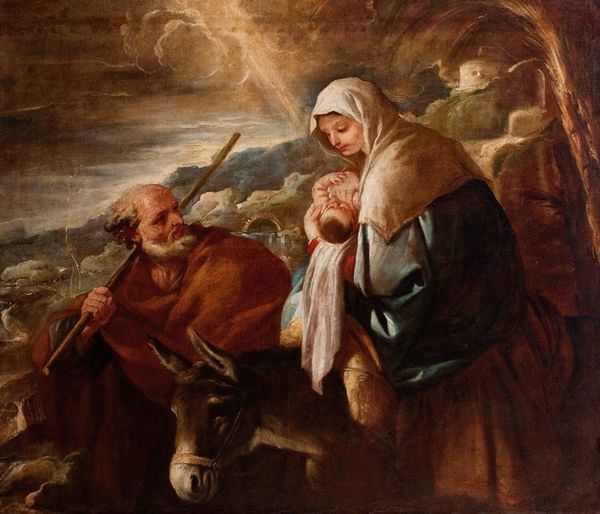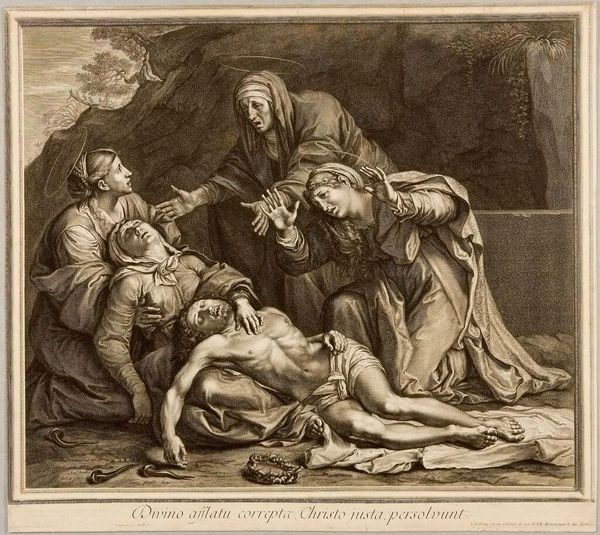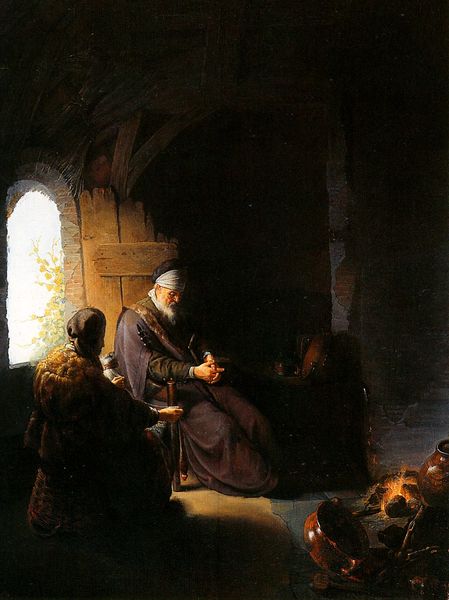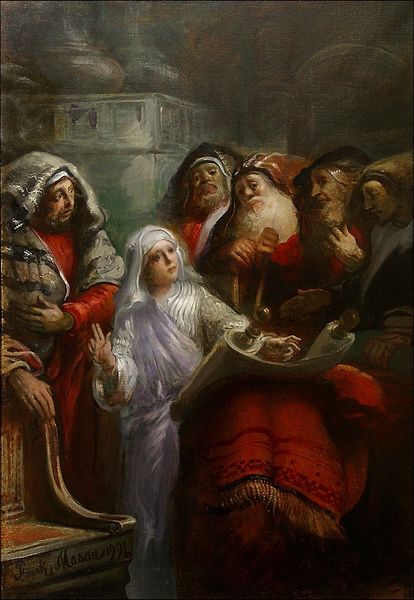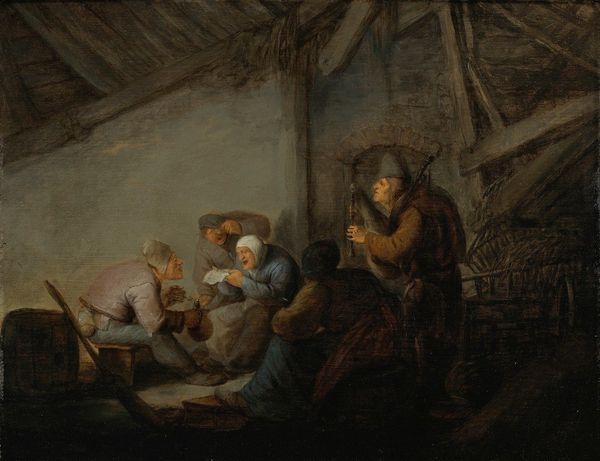
oil-paint
#
baroque
#
oil-paint
#
figuration
#
oil painting
#
christianity
#
mythology
#
genre-painting
#
history-painting
Dimensions: 22 x 16 cm
Copyright: Public domain
Curator: Here we have "The Temptation of St. Anthony" by David Teniers the Younger. Editor: Immediately, the gloom and grotesque details stand out. It looks like a depiction of inner turmoil, a landscape of the mind crafted in oil paint. The shadows are as thick as the temptations themselves. Curator: Precisely. Teniers masterfully renders the saint's spiritual battle through the symbolism of these figures, reflecting medieval morality plays and anxieties about sin. Notice the temptress offering the wine—a visual echo of Eve offering the apple. Editor: I'm more drawn to the materiality here, the way the artist used oil paints to construct the scene, almost like layers of societal fears built upon each other. The darkness feels heavy. Was this a popular theme for artists working with oils? Curator: Temptations of Saint Anthony were, indeed, a recurrent subject in art history. The motif offered an avenue to explore human frailty, resilience, and the triumph of spirit over flesh, concepts deeply ingrained in Christian doctrine. Consider the recurring imagery: the skull, the sacred texts, the monsters. Each represents an aspect of St. Anthony's struggle. Editor: Thinking about Teniers’s process, and the market that sustained it – did he see himself making devotional aids or conversation pieces for a wealthy clientele to ponder their own lives? Was he highlighting Christian stories for everyday contemplation, or performing for art collectors who relished genre and history painting combined? Curator: It is both, I suspect. There is clearly a narrative being weaved to create a morality painting, but these canvases ended up gracing the homes of nobles. They're getting a chance to meditate on virtue through art, through beauty. The grotesque only serves to remind them how sinful people truly are at heart, if not constantly at vigil. Editor: Seeing the art primarily used for that higher end art market reframes everything—from the underpainting to the finished details of each miniature devil. Curator: It underscores how deeply ingrained morality was within artistic creation during the Baroque period, though, right? Everything serves to convey meaning. Editor: I suppose my take-away is seeing how material circumstances often frame and refocus iconographic concerns. Curator: And I leave with an increased sense of how impactful certain stories can be when passed down through the language of symbolism and recurring image.
Comments
No comments
Be the first to comment and join the conversation on the ultimate creative platform.
